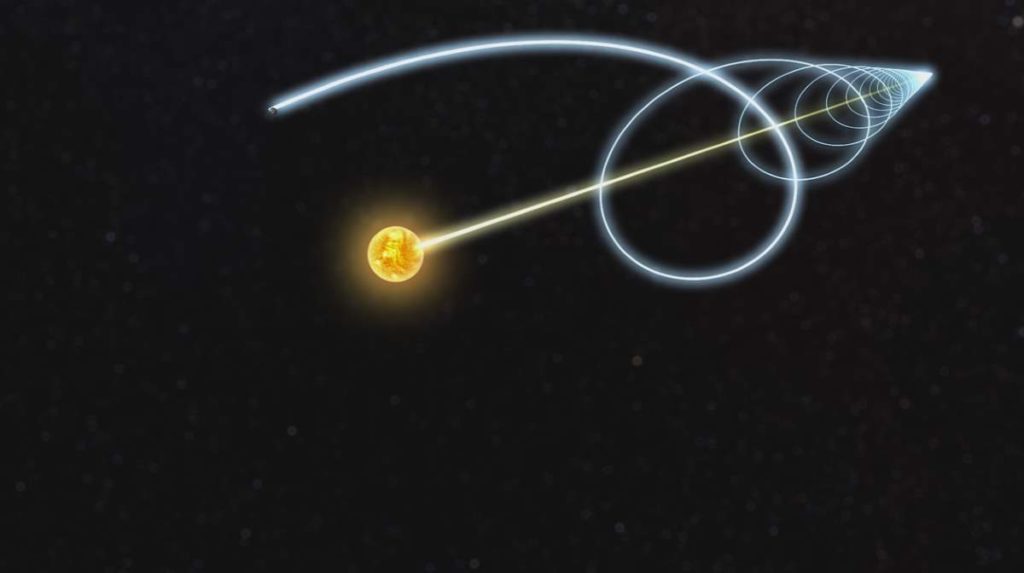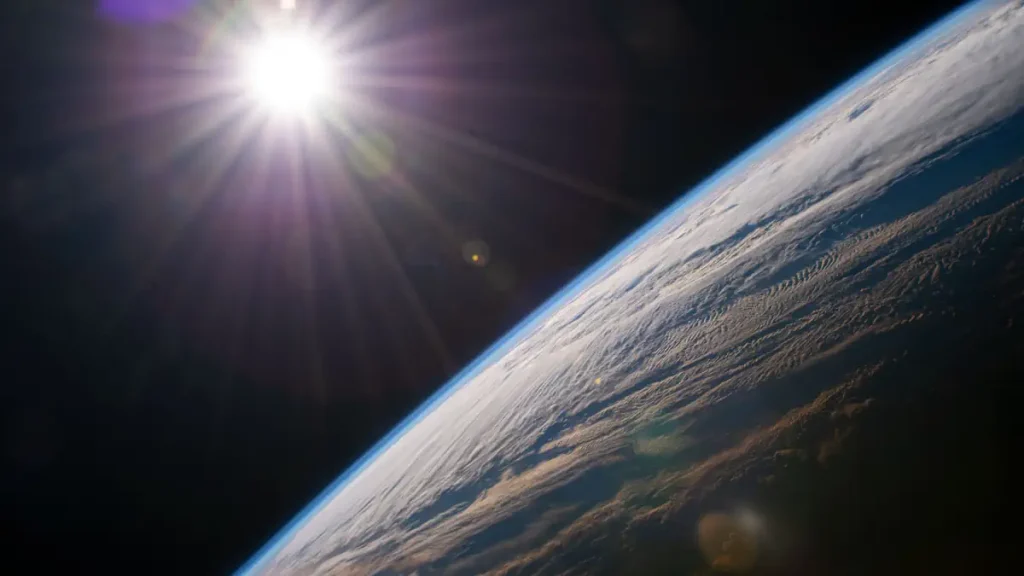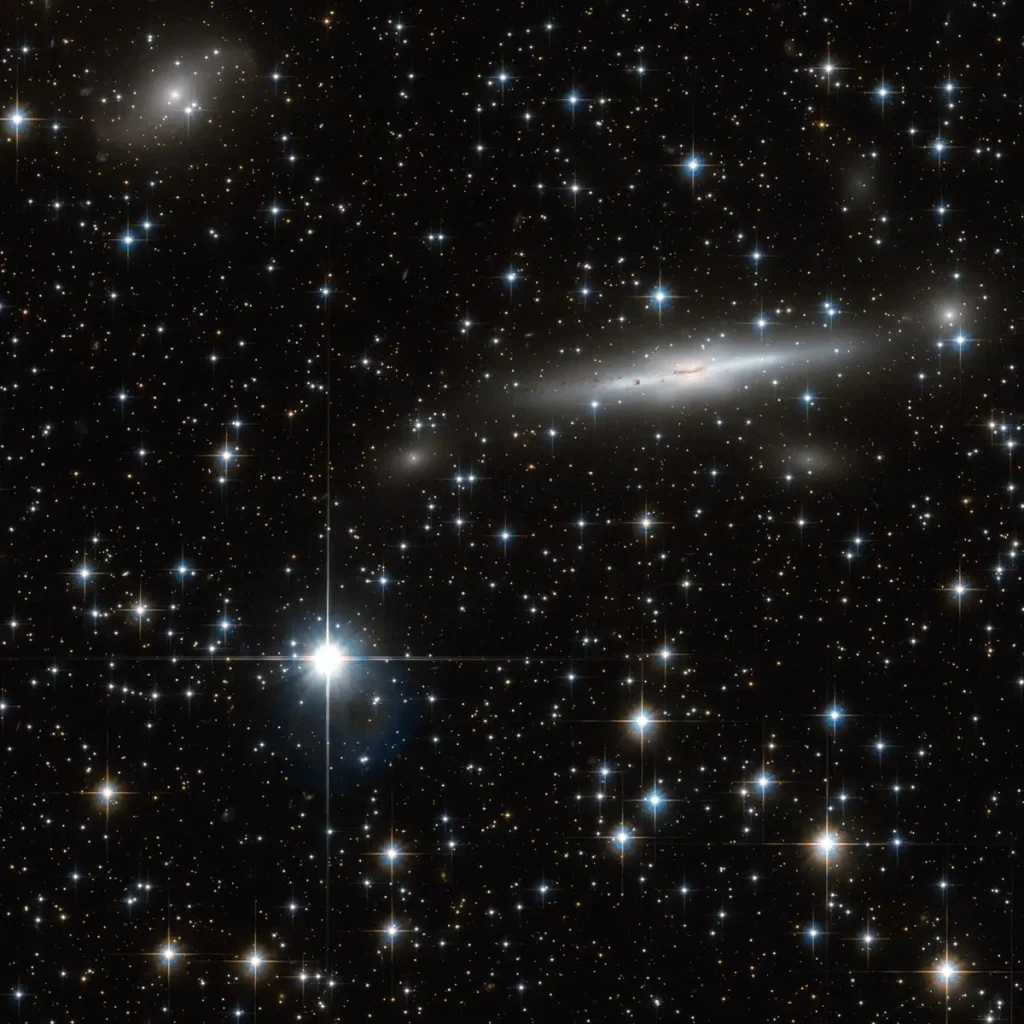As we go about our daily lives, it’s easy to forget that we’re all hurtling through space at incredible speeds. Earth is constantly in motion, rotating on its axis and orbiting around the sun. In fact, we’re all living in a fast-moving spacecraft. But just how fast is our planet moving? What’s the speed of Earth in space?
The answer is surprisingly complex, and the exact speed varies depending on the reference point. In this article, we’ll explore the different ways to measure Earth’s speed, from its rotation speed and its orbital velocity around the sun to the Sun’s movement around the center of the Milky Way galaxy, and gain a new appreciation for the incredible speed at which we’re all traveling.
Discovering the Speed of Earth in Space
The Earth is rotating and also orbiting the Sun. The Sun (our solar system, the Sun, Earth, and all the other planets and objects) whirls around the center of our galaxy, the Milky Way. And, our galaxy and the other galaxies in our neighborhood are also rushing towards a structure called the Great Attractor, a region of space roughly 150 million light-years away from us.
This Great Attractor, having a mass 100 quadrillion times greater than our sun and a span of 500 million light-years, is made of both the visible matter that we can see along with the so-called dark matter that we cannot see.
So, even when you’re resting on your armchair, you’re flying through space faster than the fastest human-made object. But how fast actually?
Questions about how fast the Earth, or anything, for that matter, is moving are incomplete unless they also ask, “compared to what?” Without a frame of reference, questions about motion cannot be completely answered. For example, when we say a car is traveling at 120 km/h, we mean that it travels 120 km across the Earth in one hour and ignores the fact that the Earth itself is moving.

Related: How Earth moves? (Video)
Earth’s Rotational Speed
The Earth is 24,900 miles in circumference at the equator or 40,000 kilometers. The Earth takes 24 hours to make one rotation. So:
24,900 / 24 = 1,037 mph or 1,666 km/h
That number is the greatest number at the equator, and as you move toward the poles it decreases (see: how fast are you spinning?). At the poles

Earth’s orbital speed around Sun
Earth lies at an average distance of 149.59787 million kilometers (93 million miles) from the Sun and a complete orbit occurs every 365.256 days (1 sidereal year, which is the orbital period of the Earth around the sun, taking the stars as a reference frame. It is 20 minutes longer than the tropical year because of precession), during which time Earth travels 940 million kilometers (584 million miles).
584,000,000 / (365×24) ~= 67,000 mph
Earth’s orbital speed averages about 30 km/s (108,000 km/h or 67,000 mph), which is fast enough to cover the planet’s diameter in seven minutes and the distance to the Moon in four hours.

The Sun’s Motion
Our Sun’s motion also affects the speed of Earth in space. The Solar System is near the edge of the Milky Way and orbits the galactic core. The solar system is something like 25,000 light-years away from the center of the galaxy. By measuring the speed of other galaxies moving towards or away from us, we can get a reasonable idea of our own orbital speed: the Milky Way makes one rotation every 250 million years or so.
That gives the solar system a speed of something like 230 kilometers per second (514,000 mph or around 828,000 km/h). But we can’t just add this to Earth’s speed around the Sun, because we’re moving in circles – all we can say is that Earth’s speed around the galaxy is somewhere between 447,000 mph and 581,000 mph (720,000 kph to 936,000 kph) depending on the day of the year.

The speed of the Milky Way itself
Today, some 12 to 15 billion years after the Big Bang, there has been a lot of stretching. Space has expanded quite a bit. The flash of the Big Bang has stretched until it is now much longer, lower energy waves: microwaves and other radio waves. But the waves have stretched with the space they occupy, and so they still fill the universe, just the way they did at the time of creation.
Astronomers call the collection of all these stretched waves the “Cosmic Background Radiation” or CBR. Physicists back in the late 1940s predicted that there should be such a background, but since no one had the equipment to find it, the prediction was forgotten.
Then, in the mid-1960s, two scientists working for Bell Laboratories, Arno Penzias and Robert Wilson, accidentally discovered the CBR while helping to get communications satellite technology going for the phone company.
After astronomers used other telescopes and rockets in orbit to confirm that the radio waves the two scientists had discovered were really coming from all over space, Penzias and Wilson received the Nobel Prize in physics for having found the most direct evidence for the Big Bang.
The CBR provides a “frame of reference” for the universe at large, relative to which we can measure our motion. Because the CBR permeates all space, we can finally answer the original question fully, using the CBR as the frame of reference.
In 1989, the COBE satellite was placed in orbit about the Earth to measure the long-diluted radiation echo of the birth of our universe (CBR). One of COBE’s discoveries was that the Earth was moving with respect to this CBR with a well-defined speed and direction.
The speed turns out to be an astounding 600 kilometers per second 1.34 million miles per hour (2.16 million km/h)! We are moving roughly in the direction that is defined by the constellations of Leo and Virgo in the sky. Although the reasons for this motion are not fully understood, astronomers believe that there is a huge concentration of matter in this direction.
Some people call it The Great Attractor, although we now know that the pull is probably not due to one group of galaxies but many. Still, the extra gravity in this direction pulls the Milky Way (and many neighboring galaxies) in that direction.

Summary: The speed of Earth in space
Overall, the Earth’s speed in space is around 370 kilometers per second (1,332,000 km/h or 827,666 mph) relative to the CMB (Cosmic Microwave Background), but it depends on where we are in our orbit around the Sun and the milky way.
That speed is less than the Milky Way’s speed relative to the CMB towards the Great Attractor because the Sun is moving the opposite way. (600-230 = 370 kilometers per second).
Video: The Earth’s relative velocities
Planetary scientist Dr. James O’Donoghue published a video showing the relative cosmic velocities of planet Earth and the speeds to scale.
O’Donoghue says “The speed of light is 350 times faster than all these velocities combined”.
Sources
- How fast is the Earth moving? on Scientific American
- How fast is the Earth traveling through space? on Urban Astronomer
- How fast are you moving through the universe right now? on brainstuffshow.com
- Earth’s orbit on Wikipedia
- How Fast Are You Moving When You Are Sitting Still? on astrosociety.org
- Great Attractor on Wikipedia
- Cover image: “A beautiful night sky, the Milky Way, star trails, and the trees” on Deposit Photos.
- How Many Elephants are Left in the World in 2025? - August 17, 2025
- Moon Landings: All-Time List [1966-2025] - February 2, 2025
- What Is Max-Q and Why Is It Important During Rocket Launches? - January 16, 2025
